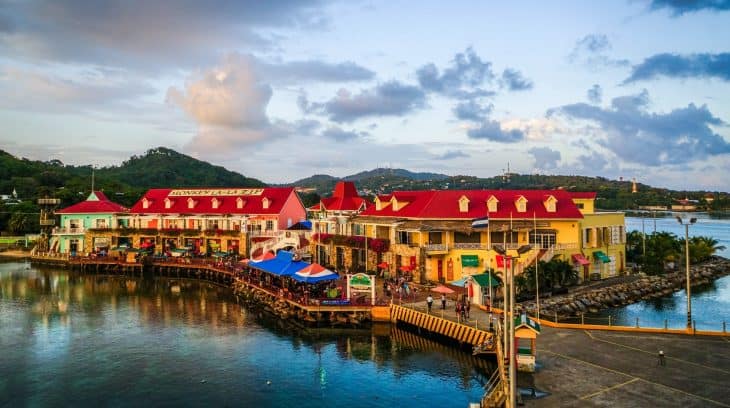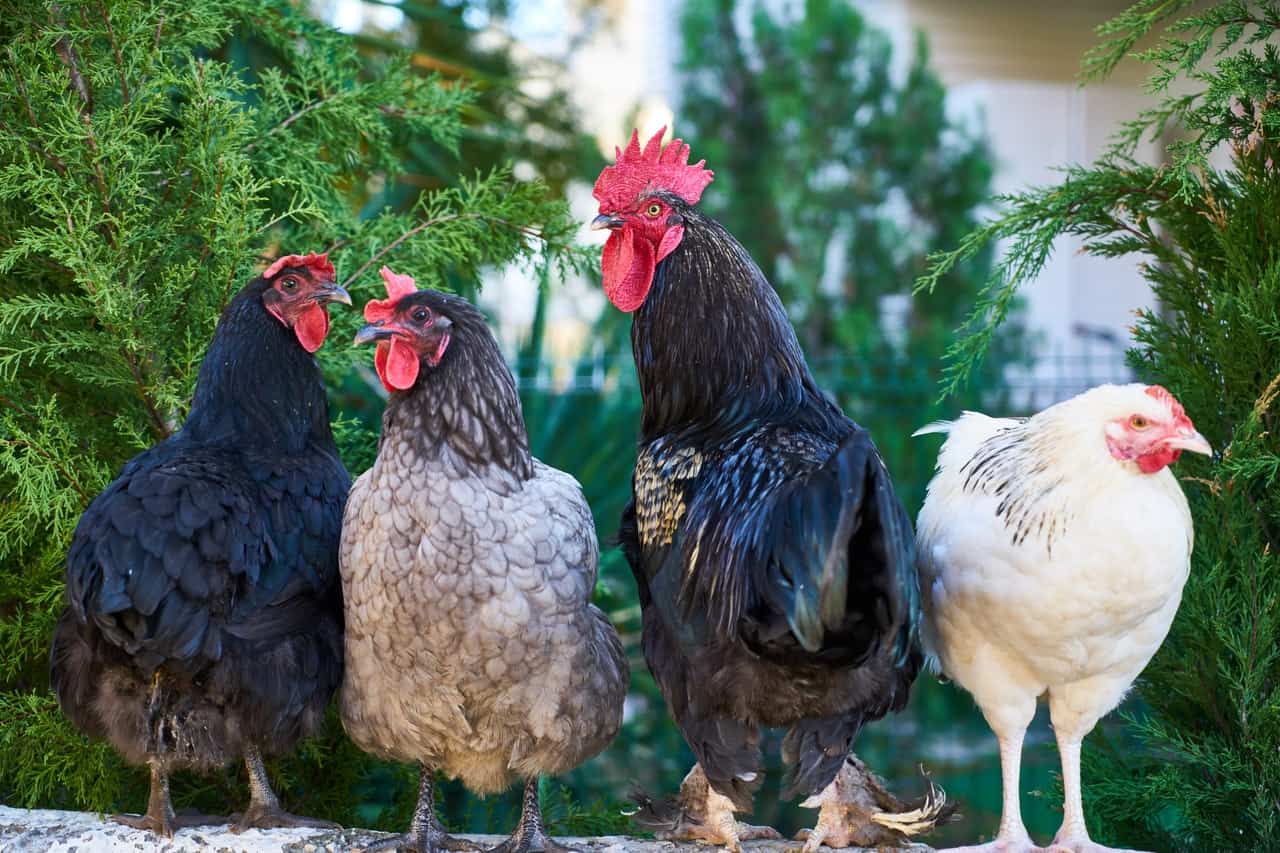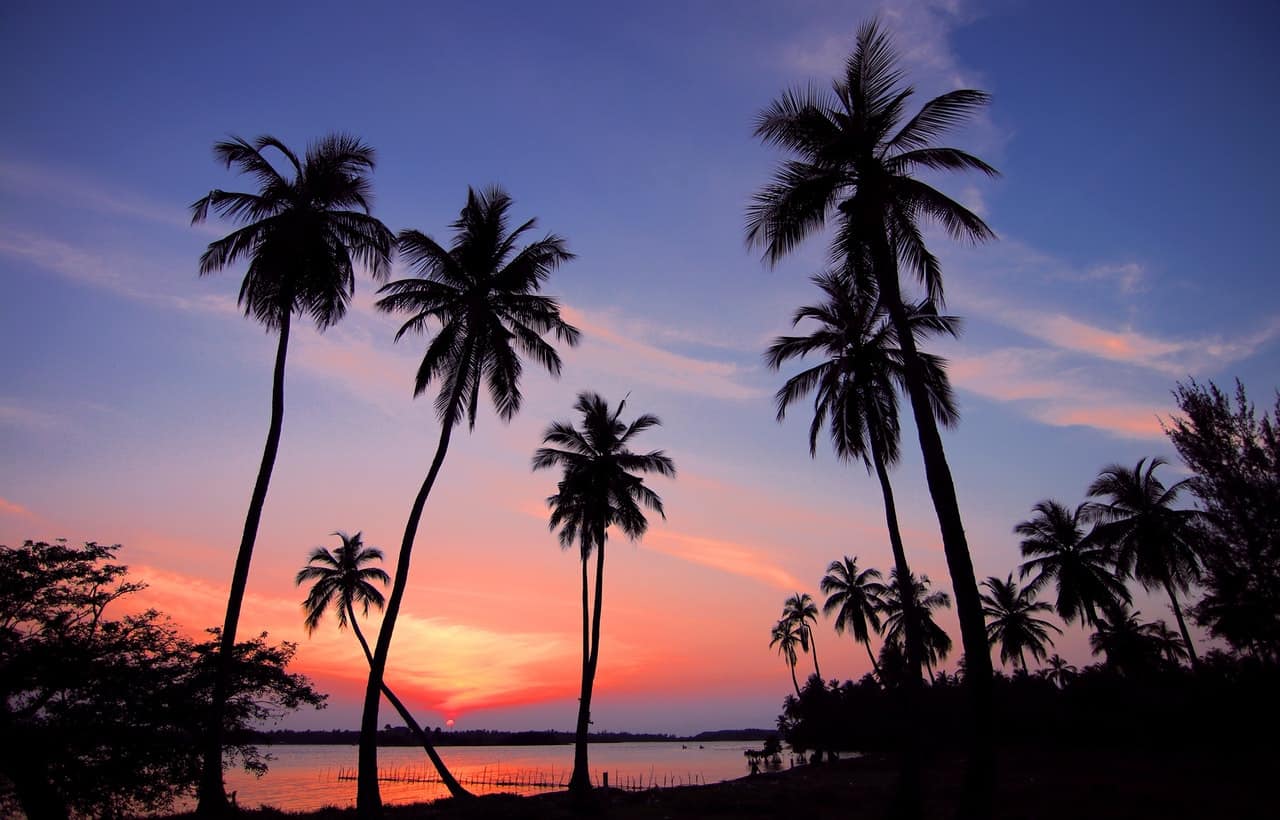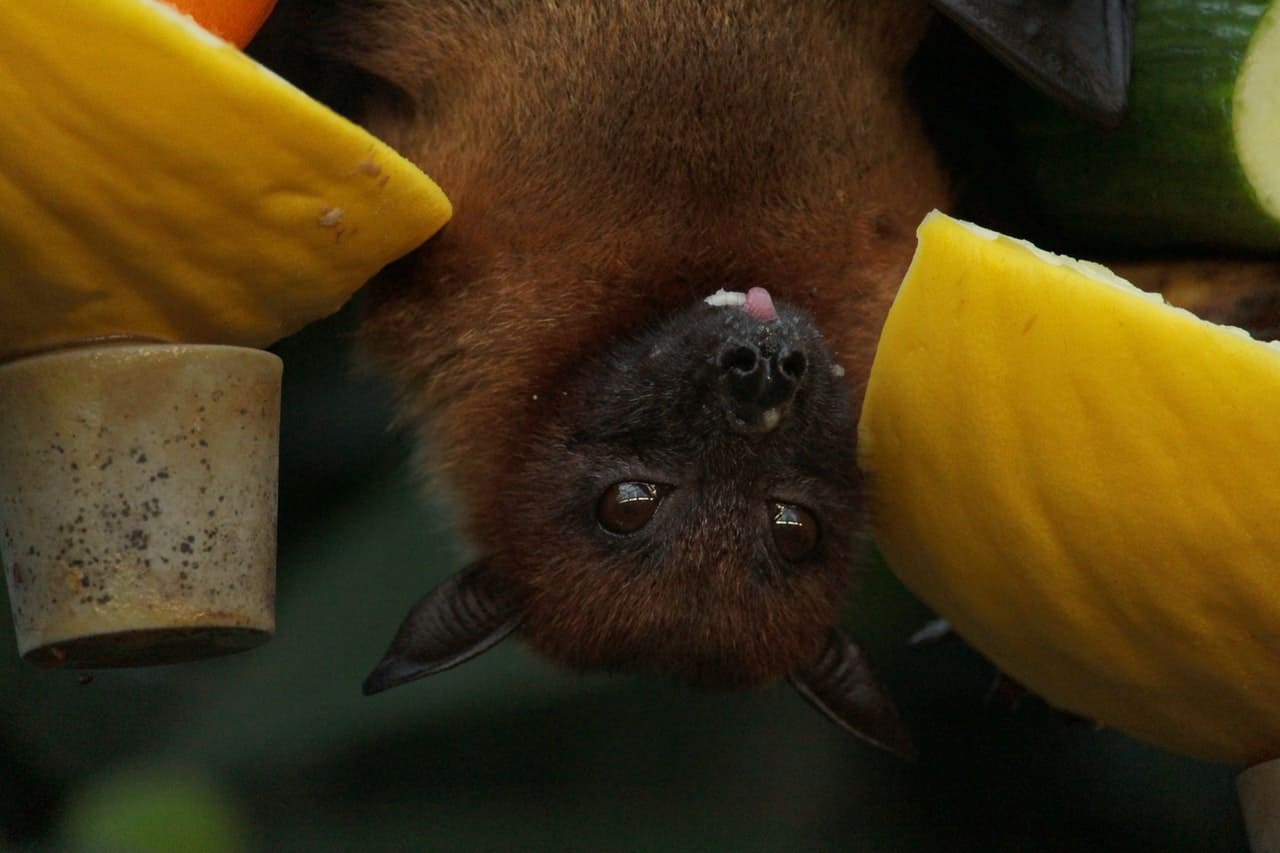
Throughout the world, Honduras has gained a reputation for its many natural exports. Aside from its abundant natural resources, Honduras also carries a rich legacy of Mayan culture and traditions. Take a closer look at the second-largest country in Central America with these Honduras facts.
- The country declared independence from Spain in September 1821.
- As of 2018, the estimated population of Honduras is 9,587,522.
- Honduras has a $5,817 GDP per capita.
- The total area of Honduras is around 43,443 square miles.
- Around 90% of ethnic groups in Honduras are Mestizo.
- Vehicles in the country drive on the right side of the road.
- The country is officially known as the Republic of Honduras.
- Honduras is bordered by four other countries in Central America.
- Honduras is home to several Mesoamerican cultures such as the Maya.
- The local currency in Honduras is called Lempira (NHL).
- The Spanish introduced Roman Catholicism to the country.
- Spanish is the most predominant language in the country.
- The economy of the nation has primarily relied on agricultural means.
- Honduras has a Human Development Index of 0.625.
- Until the 2009 coup, the country had relatively high political stability.
- The timezone of Honduras is set at GMT -6 (CST).
- Honduras’ calling code is +504.
- Honduras remains one of the poorest countries in the Western Hemisphere.
- The wealth of the country is primarily focused on urban development.
- The northern section of the country is considered part of the Western Caribbean Zone.
Honduras Facts Infographics

Honduras has a motto of its own.
The country’s motto is in Spanish and states “Libre, Soberana e Independiente.” This translates to “Free, Sovereign, and3 independent” in the English language.
Honduras has rich natural resources.
A few of its best exports include minerals, tropical fruits, and sugar canes. Honduras also has a growing textile industry that exports its goods to other countries.
These exports are one of the main profits the country makes to keep its economy running today.
The flag of Honduras uses only two colors.
The flag of the Republic of Honduras only uses the color blue and white on its flag. The five stars on their flag also represent the five countries in Central America.
More notably, the center star on the flag represents Honduras, as it is the only Central American country that shares borders with the other four.
The capital of Honduras is Tegucigalpa.
The city of Tegucigalpa is located on a hilly terrain that is hemmed in by the country’s mountains. It stands at approximately 3,200 feet above sea level.
This city is also considered the largest in the country, founded by the Spanish as a mining town in the 16th century.
La Tribuna is one of the most popular newspapers in Honduras.
In 1976, writer and lawyer Oscar Armando Flores Midence founded the La Tribuna newspaper in Honduras. From its establishment, Midence led the publication as its president.
Over time, Midence officially relinquished his position in 2009. In his place, Midence selected his son Carlos Roberto Flores to succeed him as La Tribuna’s president.

The smallest bay island in Honduras is Utila.
This island’s entire eastern side is capped off with a thin veneer of basaltic volcanic rocks. This unique land formation was created by surrounding pyroclastic cones such as the 243 ft Pumpkin Hill.
The island of Utila currently has a rapidly growing scale of tourism that emphasizes recreational diving as its main attraction. The island is also known for being one of the best diving locations in the world.
British Honduras is also known as Belize.
Belize was a crown colony located on the east coast of Central America and south of Mexico. British Honduras was renamed to Belize in June 1973 when it gained full independence.
San Pedro Sula in Honduras is one of the most violent cities in the world.
In 2019, there were a total of 111.03 homicides per 100,000 residents in the city. The city is also plagued with several gangs, drug use, and poverty.
La Ceiba serves as the gateway to the bay islands of Honduras.
Located in northern Honduras, La Ceiba is a Caribbean port city and the gateway to the bay islands of Roatan, Utila, and Guanaja. It is also located along a great barrier reef that holds popular diving sites.
The site is also teeming with vast marine ecology such as whale sharks.
Televicentro is one of the main TV stations in Honduras.
This TV station is located in the capital of the city. Televicentro was founded in 1987 to unite four other television channels.
These included Canal 5, Telecadena 7 y 4, Telesistema Informativo (TSi), and Mega Show Business TV.
Typically, meals in Honduras include rice and beans.
A typical meal in Honduras includes some kind of protein and tortillas as well. Common meats include pork, beef, and chicken.
Local cuisine also includes much seafood and coconuts as their main ingredients.
Honduras has a national football team that represents the country.
The Honduras Men’s National Team represents Honduras in the Men’s football league competitions. Nicknamed the Los Catrachos, this sports team was founded in 1921.
Its very first international football match was against the Guatemalan team in September 1921.
Honduras translates to ‘Depths’.
The name is believed to reference Trujillo’s history as an anchorage bay. In the Leonese dialect of the Spanish language, the word Honduras also comes from ‘fondura’.
This may also possibly reference Christopher Columbus’s alleged quote, “Gracias a Dios hemos salido de eses Honduras.” The explorer’s words roughly translate to “Thank God we have departed from those depths.” in English.
Until 1580, Honduras was only referred to as the eastern part of the country.
The western part of the country was also once referred to as the Higueras. Additionally, another early name for the country was Guaymuras, which was revived as the name of the political dialogue in 2009.
Catracho or Catracha is often the term used to refer to Hondurans.
Originally coined by the Nicaraguans, this term roots from the surname of the Spanish Honduran General, Florencio Xatruch.
This general also led the Honduran armed forces in 1857 against the attempted invasion of North American adventurer, William Walker. The nickname for the people is considered not to derogatory, but instead complimentary.

Honduras was once part of the Mesoamerican cultural area before the Columbian times.
Historians believe that in the extreme west, the Mayan civilization flourished before the arrival of the Columbian colony. Copan was also one of the most dominant and well-studied states within the borders of the country.
Visitors may explore Maya ruins in Honduras.
Much of the Mayan city has been preserved for years, and many of its larger artifacts have been moved to museums and indoor storage facilities. The site is also home to the world’s longest petroglyph which has been named a UNESCO World Heritage Site.
The Maya ruins are a collection of large free-standing statues and temples with detailed carvings. Symbols are also carved across the faces of the rocks which are still being deciphered by historians to this day.
Honduras is a part of the second-largest coral reef in the entire world.
The Belize Barrier Reef is the second-largest coral reef in the world next to the Great Barrier Reef. It is a 300 km long section that is part of the 900 km Mesoamerican Barrier Reef System.
This continues from Cancun located on the north-eastern tip of the Yucatan Peninsula through the Riviera Maya, connecting to Honduras.
The country of Honduras is one of the first countries to ban smoking in private homes.
The new anti-smoking laws in Honduras are strictly implemented. The law has also allowed family members to call the authorities if someone smoking inside their homes refuses to stop.
Smokers must also be six feet away from non-smokers and stay within designated smoking areas.
The Scarlet Macaw is the national bird of Honduras.
Also known as the Aro Macao, this bird is known for its iconic red, blue, and yellow plumes. These birds typically live in forests located in the northern Central American areas.
The IUCN has also declared this species of bird as endangered. The Scarlet Macaw was declared the national bird of Honduras in 1993 by the Congress of Honduras as a way to raise awareness of this species of birds.
Honduras is the second-largest country found in Central America.
Honduras’ size only comes second to Nicaragua in Central America. Honduras also has four distinctive regions: the central highlands, eastern Caribbean lowlands, northern coastal plains, and Pacific lowlands.
Honduras has gained a reputation as the Banana Republic.
The term Banana Republic comes from the time when bananas comprised the country’s primary exports. This term collectively refers to most Latin American countries with a bountiful supply of banana exports.
The life expectancy in the republic of Honduras is 74.6 years old.
As of 2018, the life expectancy of residents in Honduras is 74.6 years old. This has increased significantly since 1960 when life expectancy was just below 50 years old.
One of the top leading causes of death in the country is death through violence and coronary heart disease. Strokes and kidney failures are also quite common for residents of Honduras.
Those who are a part of the Mara Salvatrucha are covered head to toe in tattoos.
The Mara Salvatrucha, commonly known as the MS-13, is an international criminal organization that originated from the city of Los Angeles, California in 1970. While it was originally established to protect Salvadoran immigrants from other gangs in the area, it became a more traditional crime group over time.
The organization has several territories including Honduras, Canada, and the United States. The group also mainly consists of Central American members.
The busses in Honduras are called chicken busses.
These busses are often painted colorfully and are often used by locals as a way of transporting stock. This also includes live-stock such as chickens, hence the name.
The term is believed to have originated from Guatemala and has since been a popular way to transport goods.

The most popular event enjoyed in Honduras involves sawdust.
This Honduran event is called the Sawdust Alfombras de Comayagua. It is celebrated by creating large tapestries following religious themes using colored sawdust.
Once the tapestry is finished, they are trampled on by a holy march which marks the stations of the cross. Each artwork has an evangelistic message and is designed using cardboard molds.
Honduras owns one of the oldest clocks in the world.
Built during the colonial era in Honduras, the Cathedral de la Inmaculada Concepción of Comayagua was inaugurated in December 1711. The interior features a clock built by Arabs during the Spanish occupation around 1100.
The white-tailed deer is the national mammal of the Republic of Honduras.
The Yucatan white-tailed deer serves as the national symbol of all Honduran wildlife. This was officially established by the National Congress of the Republic of Honduras in 1993.
Honduras was first discovered by Christopher Columbus in 1502.
Christopher Columbus discovered the land of Honduras during his fourth voyage on July 30, 1502. He arrived at Guanaja and sent his brother, Bartholomew, to scout the island they came across.
He later found out that the island was inhabited by Mayans who owned rich materials which the island was full of. Columbus then claimed possession of the territory for the King of Spain.
Olimpia is one of the biggest soccer clubs in Honduras.
It is also one of the highest-ranking soccer clubs in Central America in terms of matches played and victories. As of June 2020, Olimpia is up by 55 points, totaling to 1525 points in its history.
The Rhyncholaelia Digbyana is the national flower of Honduras.
This orchid was once called the Brassavola digbyana and replaced the Rose as the national flower in November 1969. This native flower species can also be found in Guatemala, Mexico, and Costa Rica.
Originally, the Honduran botanist Jose Antonio Molina Rosito discovered the flower, which was eventually declared Flor Nacional de Honduras in November 26th, 1969.
Honduras’ most successful footballer is Winston Palacio.
This Honduran footballer plays midfield for Real Sociedad. He also previously played for the Olimpia and Victoria soccer clubs in Honduras before moving to England.
Winston Palacios has been a regular player for Honduras since 2003. He has also helped the country qualify for the 2010 and 2014 FIFA World Cups.
Honduras celebrates Children’s Day annually.
Honduras annually celebrates Children’s Day on September 10th. Locals refer to the celebration as Dia de Los Ninos.
The concept of children’s day began in 1857 and was first recognized as an official holiday in 1920 by the Republic of Turkey.
The Republic of Honduras shares borders with several countries in Central America.
Honduras is bordered by the Caribbean sea and the North Pacific Ocean. It also shares its borders with Guatemala in the west, El Salvador in the southwest, and Nicaragua on the southeast borders.
Honduras typically has tropical climates.
The Republic of Honduras has three distinct topographical regions. The climate types of each three are different but commonly share a rainy tropical climate.
The Caribbean lowlands have tropical wet climates where it is consistently high in temperatures and humidity. In terms of weather, Honduras regularly experiences rainfall throughout the year.

Only one natural lake can be found in Honduras.
Lake Yojoa is the largest and only natural lake in Honduras. The surface area of the lake spans around 79 square kilometers, with an average depth of 15 meters.
The lake sits in a depression formed by several volcanoes. It is also a popular fishing spot among locals that also has a rich biodiversity of wildlife nearby.
As of 2012, the fertility rate of Honduras is five births per woman.
This has caused the country’s population to steadily rise until 2017, where a newly recorded statistic showed that the birth rate reduced to 2.50 births per woman. The infant mortality rate is also low with only 15.1 deaths per 1000 live babies born as of 2018.
The son of Honduras's president was killed in 1997.
In 1997, Ricardo Ernesto, the son of Honduran President Ricardo Maduro, was kidnapped at the age of 25. Two days later, son’s body was found after being murdered.
The death of Maduro’s son drove him to pursue presidency, eventually being elected an official presidential candidate.
Honduran money was named after an Indian chief.
The legend states that the chief died protecting his lands from Spanish invaders. While his efforts were unsuccessful, he was still honored by using his name as the of the country.
He is also featured on the 1 Lempira note, as well as the 20 and 50 cent coins in their money.
Coffee serves as the leading export of Honduras.
Historically, coffee has always been Honduras’ leading export from the mid-2000s. In 2019, the country reportedly produced over 3.6 million bags of Arabica Coffee.
Honduras also makes up 4% of the world’s coffee market, which further proves how big it is in the coffee industry.
One of the most popular ingredients for dishes in Honduras is coconut milk.
One of the most notable dishes in Honduras is the Sopa de Caracol, which consists of large conch pieces cooked in coconut milk. Additional conch broth also adds to the dish, as well as other ingredients like cassava, spices, garlic, and chili.
Marriage under the age of 18 is banned in Honduras.
In 2017, Honduras passed a new law which prevented underaged children from being legally married. In line with this provision, the Honduran government increased the minimum age requirement from 16 to 18, and removed all exceptions for child marriage even with parental consent.
This was also a unanimous vote amongst the Honduran lawmakers. How’s that for reassuring Honduras facts?
Honduras has more than one capital city.
The Honduras constitution states that the country does not just have one, but two capitals. The most notably known one is the city of Tegucigalpa.
The second capital is a city called Comayaguela, which currently serves as a part of the Tegucigalpa Metropolitan Area.
The Cerro Las Minas is the highest point found in Honduras.
This mountain is located in the rugged and isolated area of the Lempira Department on the western side of the country. In 1987, the Honduran government established a national park for those who wish to visit the mountain.
Towering over the rest of the country, the Cerro Las Minas stands at an elevation of 9,420 feet and spans 6,788 feet.
Bats make up 50% of the mammal species in Honduras.
Honduras has a large population of native bats, who live in protected habitats. Two of these caves are located in western Honduras and are protected by law to preserve the country’s biodiversity.

Christianity is predominant in Honduras.
In 2017, it was recorded that 76% of the country’s population follows Christianity as their religion. The pre-Hispanic communities in Honduras were primarily polytheistic Mayans who followed Christianity when it was introduced by the Spanish Empire in the 16th century.
In recent years, many others began following other religious practices such as Catholicism, Jehovah’s Witness, and Mennonite.
Honduras is the first country in Central America to establish movie theatres.
The Rosario Mining Company established in San Juancito introduced the first cinemas in Honduras. This marks one of the earliest forms of public entertainment through the entirety of Central America. Definitely one of the cooler Honduras facts.
The Copan ruins make up the country’s biggest profits.
The construction for these ruins began with Copan’s 13th ruler, and was finished by its 15th successor in A.D 749. This landmark is considered one of Honduras largest and most popular tourist attractions that earn the majority of the country’s profits.
Several venomous snakes can be found in Honduras.
Honduras is home to several species of poisonous snakes. These include the rare palm pit viper, rattlesnakes, and moccasins.
The Patuca River is the longest found in the Republic of Honduras.
This river lies in the northeast of Honduras and is famed for being the longest river in all of Central America. It measures 500 kilometers long and spans 23,9000 square kilometers.
Was this page helpful?
Our commitment to delivering trustworthy and engaging content is at the heart of what we do. Each fact on our site is contributed by real users like you, bringing a wealth of diverse insights and information. To ensure the highest standards of accuracy and reliability, our dedicated editors meticulously review each submission. This process guarantees that the facts we share are not only fascinating but also credible. Trust in our commitment to quality and authenticity as you explore and learn with us.
